
1 - Overview
From March 2023 to August 2025
Vitaance is a B2B2C SaaS company focused on improving employee wellbeing through a suite of flexible benefits. The product offering includes insurance, employer-funded allowances, Spanish flexible remuneration, step tracking with collaborative challenges, mood tracking and journaling, and health-related content and quizzes.
Employees access these benefits through a mobile app, and in some cases, a Vitaance payment card for meals and transportation. Client companies and admins use a dedicated admin panel to manage employees, monitor engagement, and perform operations.
2 - My roles and responsibilities
Initially I have joined Vitaance as the only product designer. Throughout the years in the company my role evolved to better meet the requirements of the company and of the product. My responsibilities also multiplied on the base of the trust that was been given to me. With my nature of jack of all trades I welcomed and learned things from each of the positions, useful to create a more sound a cohesive product.
PRODUCT DESIGN
Led the design of key features across both mobile and admin platforms, balancing user needs with development constraints. Maintained a consistent and scalable design system to ensure clean, intuitive user experiences.
Organised and led development sprints, crafted clear user stories, and prioritised the roadmap to align team efforts with business goals and user impact.
Conducted user interviews and feature validations to gather actionable insights, ensuring our solutions addressed real user pain points. Regularly synced with clients and stakeholders to balance user and business needs.
Personally tested new releases to identify issues and improve UX fluidity, ensuring the end product met both functional and experiential standards.
Provided direct user support, gaining valuable firsthand insights into user challenges. This feedback helped refine both design decisions and product priorities.
Assisted the operations team with tasks like monthly invoicing, bank transfers, expense tracking, and user management. These experiences offered a deeper understanding of internal workflows, allowing me to design and advocate for more efficient, scalable solutions.
3 - Things I designed that I am proud of
3.1 Allowance
OVERVIEW
Prospective clients were looking for a flexible solution to offer diverse employee benefits without needing to partner with multiple providers. Employees needed to access these benefits globally, across different service categories, while companies wanted to maintain control, visibility, and ease of management.
I led the design and product definition of a reimbursement-based allowance system that balanced employee freedom, client governance, and internal process efficiency, serving as a core value proposition for Vitaance and a major driver of client acquisition.
THE PROBLEMS WE WERE SOLVING
Companies needed:
- A single system to manage various wellness-related benefits
- Custom rules per employee based on role, location, or policy
- Limited visibility into individual expenses to maintain employee privacy
Employees needed:
- Flexibility to use benefits wherever they lived
- Trust in the reimbursement process
- Transparency on what could be reimbursed and when they’d get their money back
Internally, Vitaance needed a solution that:
- Could handle complex rulesets across clients
- Made manual processing easier and scalable
- Respected privacy and compliance constraints
THE SOLUTION
After rounds of user interviews, benchmarking, and iterative validation, we landed on an allowance-based model.
Each company could define budgets with categories like Physical Wellbeing, Mental Health, or Relaxation Services, and subcategories like Gym Memberships, Therapy, or Spa Visits.
Employees would pay for services upfront, upload a receipt or invoice in the app, and then Vitaance would:
- Process the expense in the admin panel
- Categorize it based on the associated budget
- Reimburse the employee at the end of the month via bank transfer
I designed the system to offer flexibility and control to the companies, while making the user experience intuitive, reassuring, and stress-free for employees. One of the biggest UX challenges was building trust in a reimbursement model, which meant adding clarity at every touchpoint, from submission to payout.
HOW IT WORKS
In the App (Employee View)
Employees access a dedicated Allowance section:
- View their balance, top-up history, and expense status
- Submit one-off or recurring expenses (e.g., monthly gym fees)
- Get real-time feedback if an expense is approved or denied, with reasons
Top-ups (e.g. monthly €100) are linked to specific budgets and categories, with custom expiration rules. A dedicated information page explains each user’s eligibility and budget rules, removing ambiguity.




In the Admin Panel (Client View)
Company admins can:
- Set up budgets and rules per employee or role
- Define company contribution percentages
- Configure top-up frequency, amount, and expiration
- View aggregated usage per user (without accessing personal expense details)
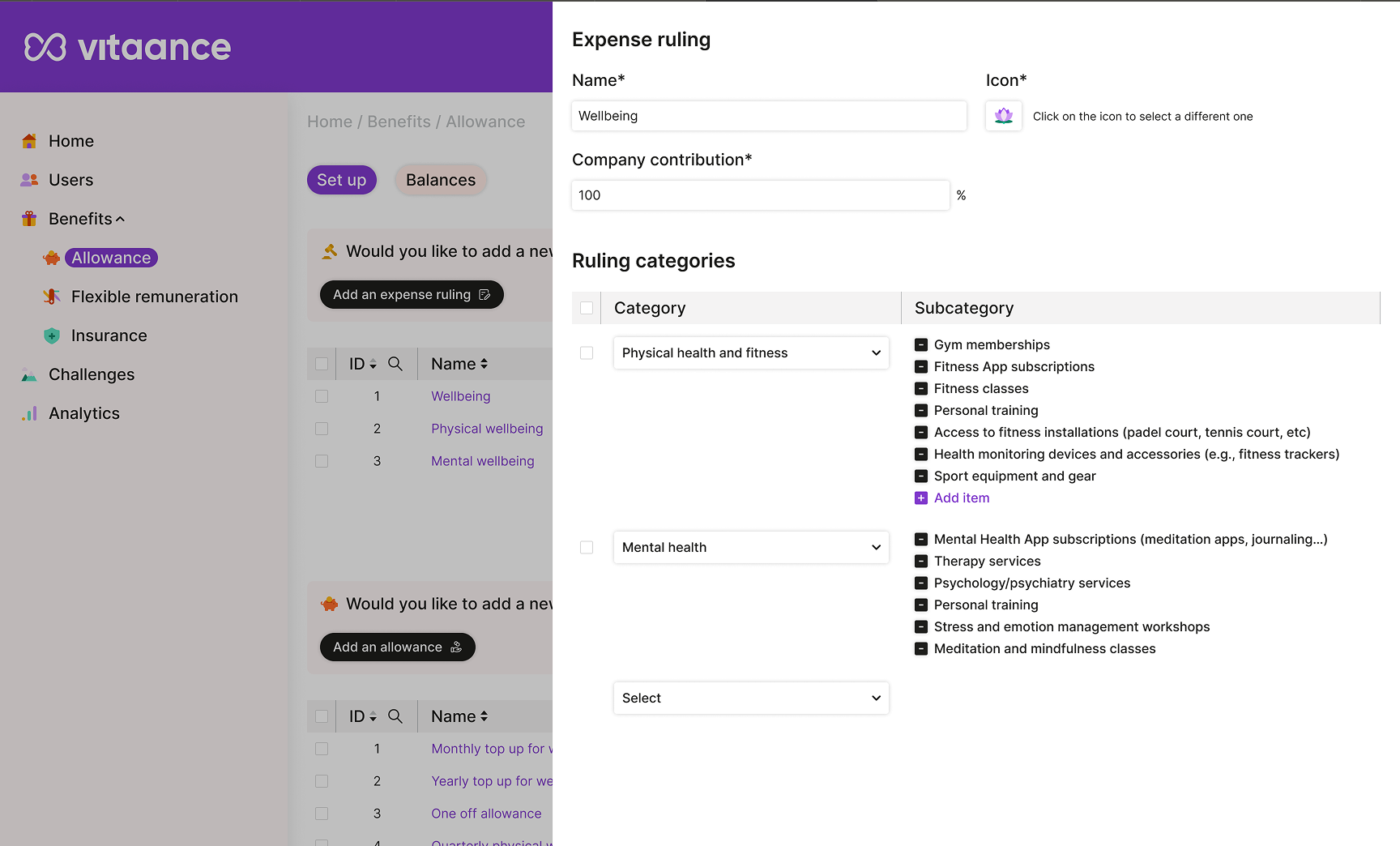

In the Super Admin Panel (Vitaance Internal)
Vitaance staff use the system to:
- Manually process expenses and handle reimbursements
- Set currency rates, match expenses to budgets
- Provide structured denial reasons where needed
We supported the process with Optical Character Recognition technology to reduce manual load, though full automation was planned for later phases.
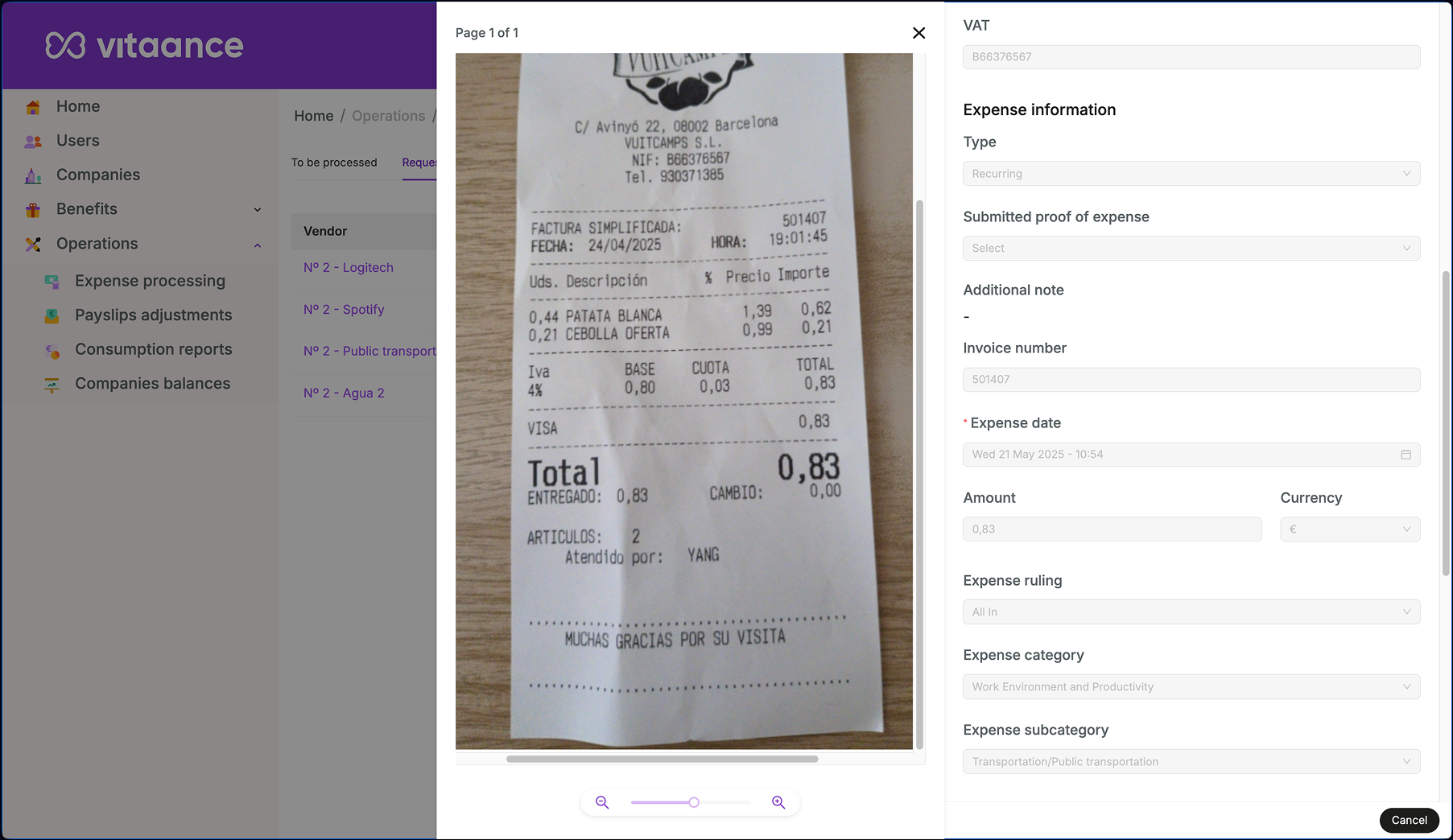
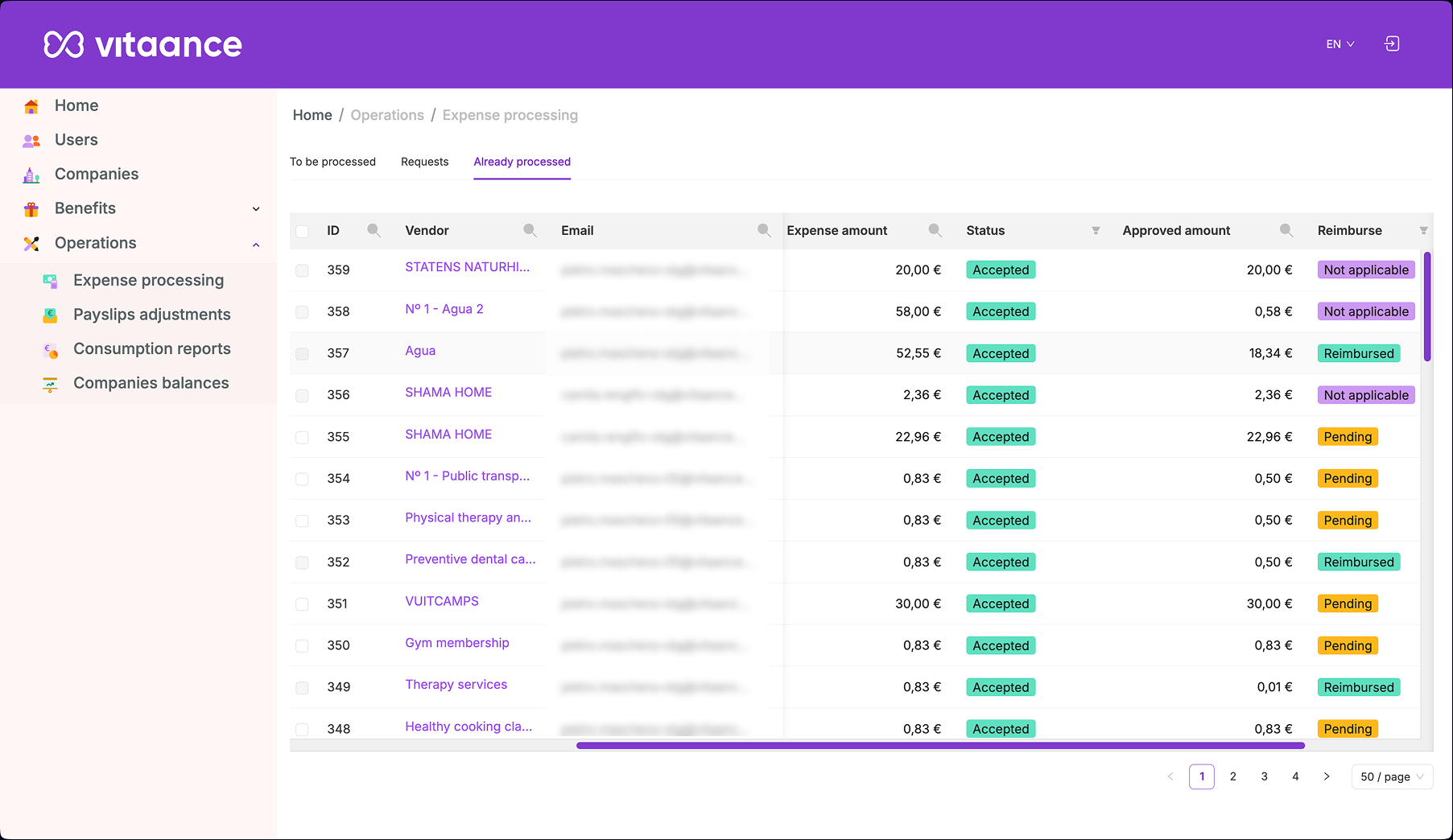
RESULTS AND IMPACT
- Over 90% of eligible users actively used this feature regularly
- It became one of the most loved features in the app, driving customer satisfaction and retention
- The ease of setup and minimal client-side maintenance became a key selling point for new clients
- The system supported company growth as more clients entrusted us with benefit management
REFLECTIONS, LEARNINGS AND FUTURE STEPS
This feature represented the intersection of design, product ownership, operations, and customer empathy.
While the user experience was smooth, internally the feature demanded significant manual effort to process high volumes of expenses. Long-term, we planned to:
- Automate processing with smart categorization and payout logic
- Add installment support for large one-off payments
- Launch a desktop version to improve accessibility for employees
- Continue evolving based on feedback loops from interviews, emails, and usage data
Designing this system required translating complex business rules into a friendly and transparent user experience, and ensuring the product delivered real value to all stakeholders: employees, client companies, and Vitaance itself.
3.2 Flexible Remuneration
OVERVIEW
In Spain, employees are eligible for tax-free benefits in the form of Flexible Remuneration, covering areas like meals, transportation, nursery, private health insurance, and training. This is a highly requested and competitive offering, and many clients expected it as a core part of their benefits package.
At Vitaance, we saw the opportunity to expand beyond our existing allowance system by launching a Flexible Remuneration feature that would help clients consolidate providers — giving employees access to all benefits within a single app. I led the product and design efforts for this project under tight deadlines and with limited engineering resources.
THE PROBLEMS WE WERE SOLVING
Our clients loved the allowance feature but didn’t want to pay for two separate platforms to manage both it and flexible remuneration. They needed:
- A compliant, tax-efficient way to manage Spanish flexible remuneration
- An all-in-one experience that integrated with existing benefits
- A system that was both intuitive for employees and scalable internally
But we faced serious challenges:
- We had to launch an MVP quickly to win clients in an extremely competitive market
- Our development resources were limited
- The user flow complexity was high, especially with reimbursements, salary deductions, and card onboarding
THE SOLUTION
To move fast, we initially repurposed the existing allowance system to support flexible remuneration with minimal engineering effort. While our competitors relied on merchant-locked cards, we launched a reimbursement-based MVP — giving users the flexibility to use any vendor, anywhere.
This gave us an edge in terms of cost and vendor coverage, but it also introduced usability issues:
- Employees needed to upload receipts daily, which quickly became tedious
- The reimbursement process was complex: users paid upfront, got reimbursed by Vitaance, and then had the amount deducted tax-free from their salary
- The operations team became overloaded with expense processing
To address these issues, we eventually designed and launched a card-based system to support real-time payments for meals and transport, while maintaining the reimbursement flow as an option for clients who preferred it. We also added support for nursery payments, with tax-saving calculations and allowance integration.
HOW IT WORKS
In the App – Reimbursement Method
In the Flexible Remuneration section of the app, employees could upload invoices for eligible expenses (e.g. meals, transport). Unlike the allowance feature, this system didn’t use a balance. Instead, it summarized monthly expenses, which were reimbursed and later deducted from the salary tax-free.




In the App – Card Method
Designing the card onboarding flow was one of the biggest UX challenges. Due to legal and technical requirements from our card provider, the process included multiple steps:
- Entering a token from the physical card
- Creating and saving a PIN
- Visiting an ATM to sync the card
- Inserting the card for the first payment (not using contactless)
Although the flow worked, it wasn’t frictionless — especially when early users shared confusing instructions with others. We addressed this by improving in-app guidance and clarifying communication, but the solution required more structural improvements, which we planned for Vitaance Card 2.0.
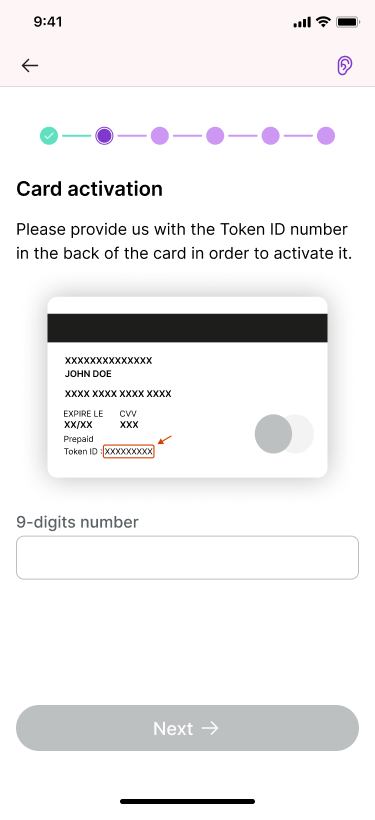
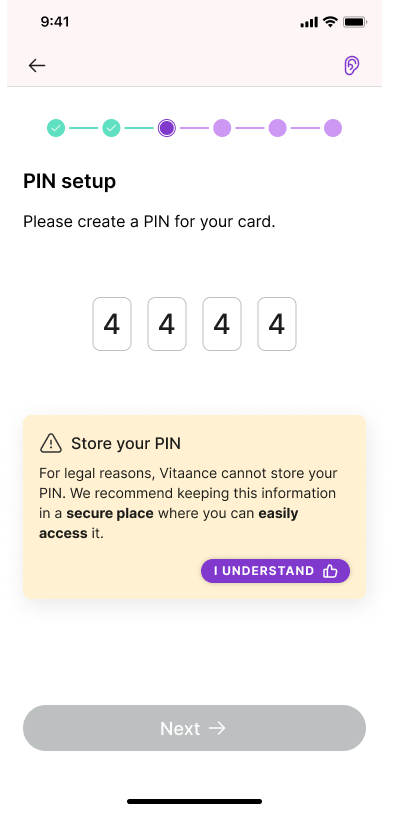

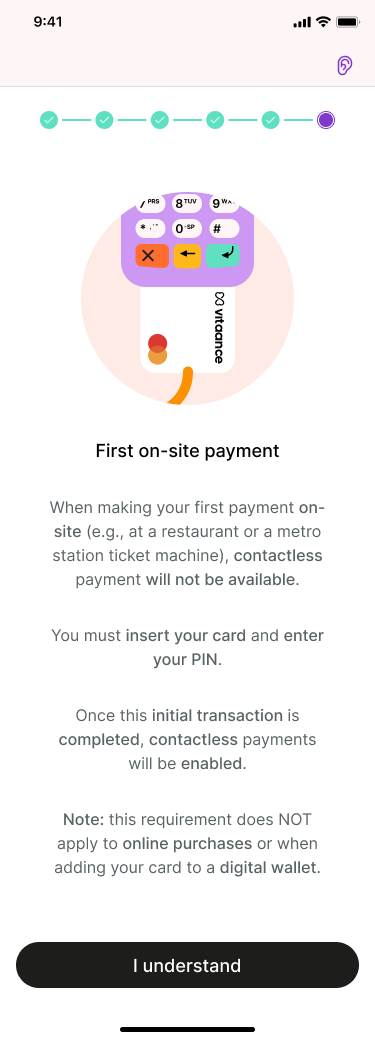
In the App – Nursery
Employees could:
- Register their children
- Choose a nursery from a pre-approved list
- Set up payments
This feature was unique in the market due to its dual system integration, combining flexible remuneration with a parallel allowance contribution, giving clients more options and flexibility.
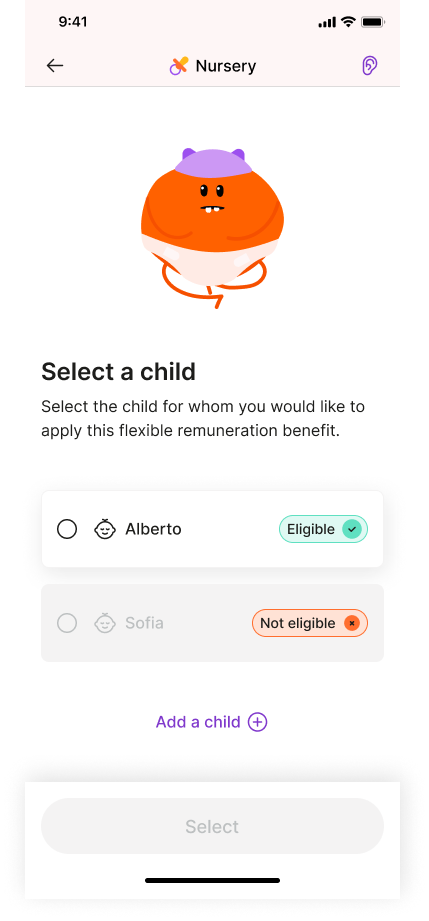
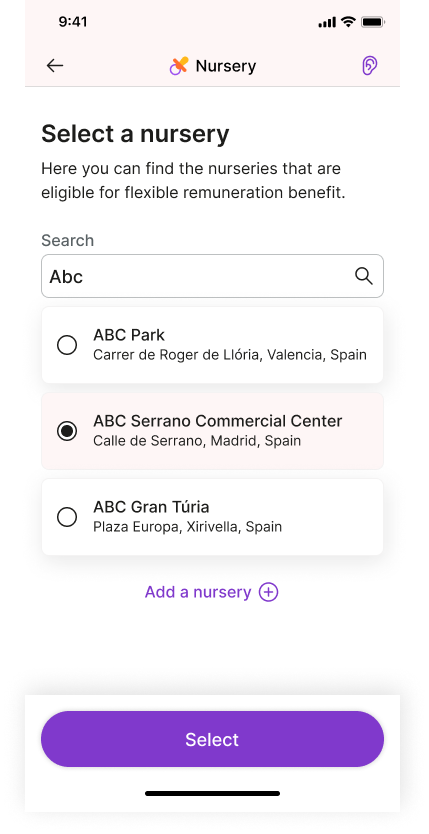


Admin Panel
HR admins could:
- Create custom benefit plans per employee or group
- Monitor usage and update rules
- Manage allowances and flexible remuneration from one platform
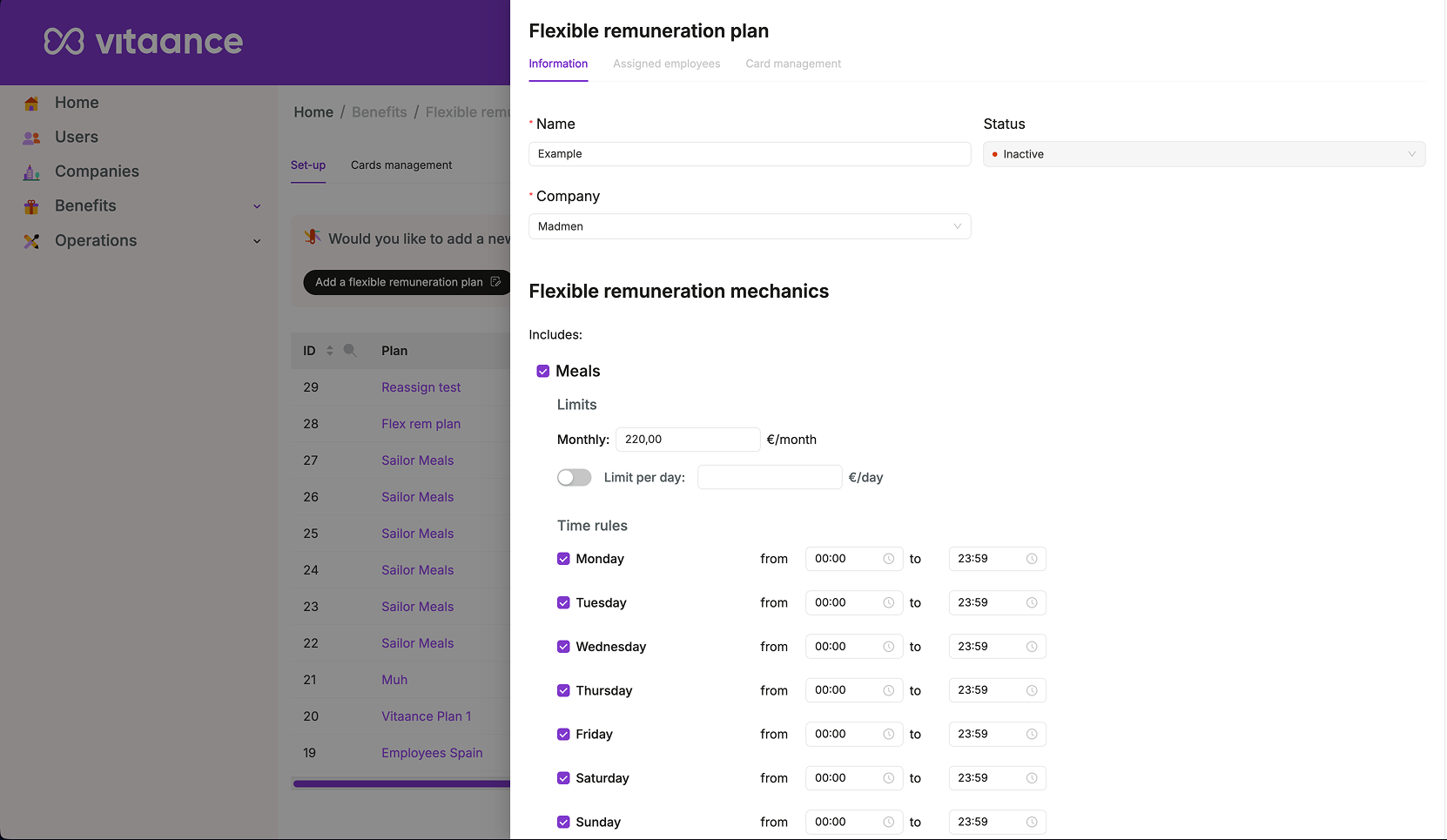
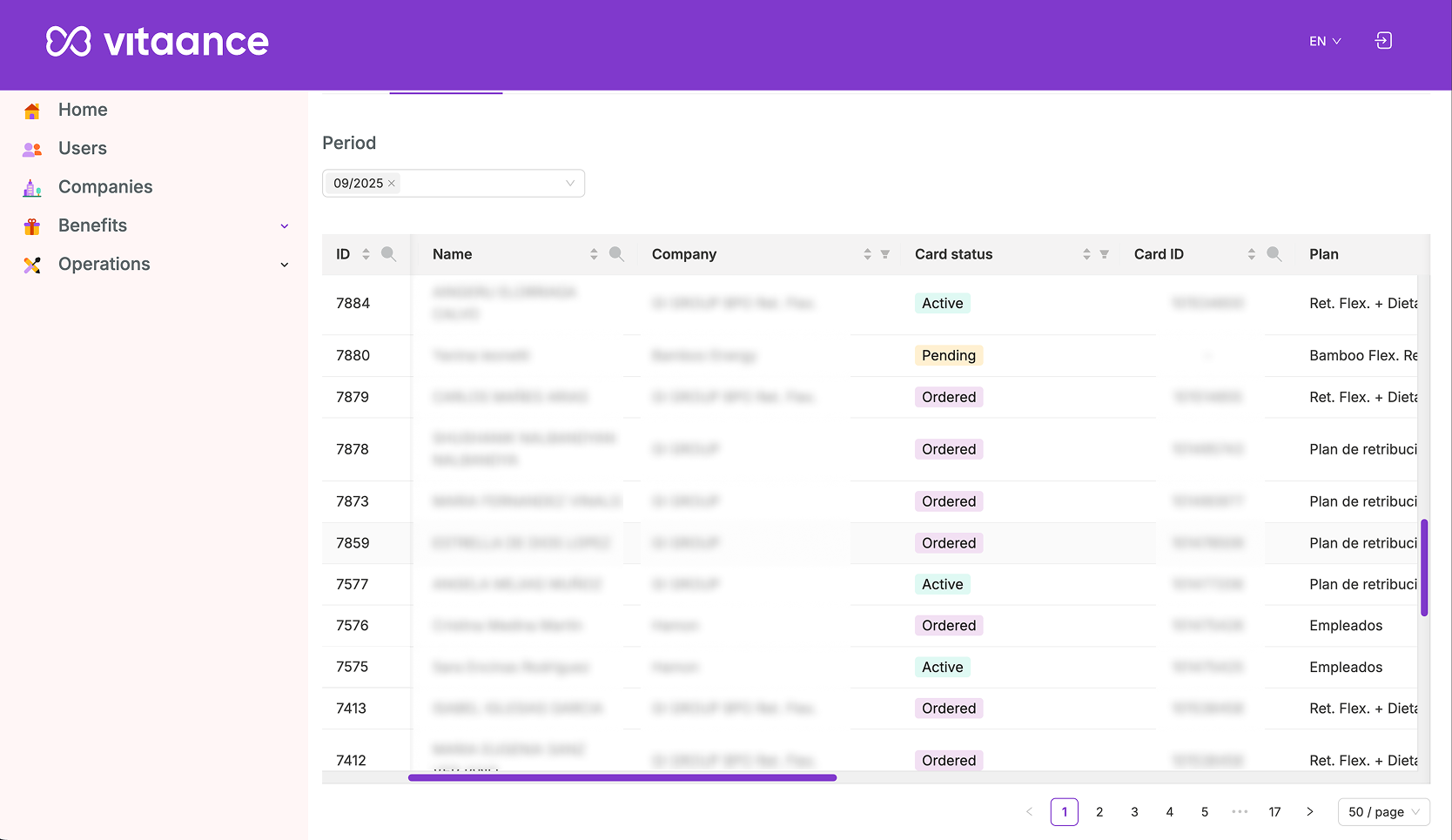
RESULTS AND IMPACT
- Used by 70% of eligible users, many of whom interacted with it daily
- Helped Vitaance win and retain clients who were considering other providers
- Offered greater flexibility and cost-efficiency than traditional card-only competitors
- Opened the door to a broader multi-benefit product strategy
REFLECTIONS, LEARNINGS AND FUTURE STEPS
This was a high-impact feature launched under serious constraints. We moved fast, reusing existing systems and iterating based on user feedback. While it was widely adopted and appreciated, parts of it were held together by temporary solutions due to time pressure.
The biggest pain point was the manual onboarding and processing related to the card flow. Our next steps were clear:
- Build a robust card program with easier activation
- Continue supporting both reimbursement and card methods to fit diverse client preferences
- Improve internal tooling to ease the burden on the operations team
Despite the early limitations, this feature became a cornerstone of our benefits platform and proved that we could adapt quickly, build smartly, and serve real market needs without compromising on user experience.
3.3 Branding and Design System
FROM LEGACY TO A LIVING DESIGN SYSTEM
When I joined Vitaance, both the app and the admin panel were already in advanced stages of development. However, the app’s visual identity felt outdated and lacked the personality that the brand aimed to convey. It needed a fresher, more engaging look, something more in tune with our mission to make wellbeing approachable and enjoyable.
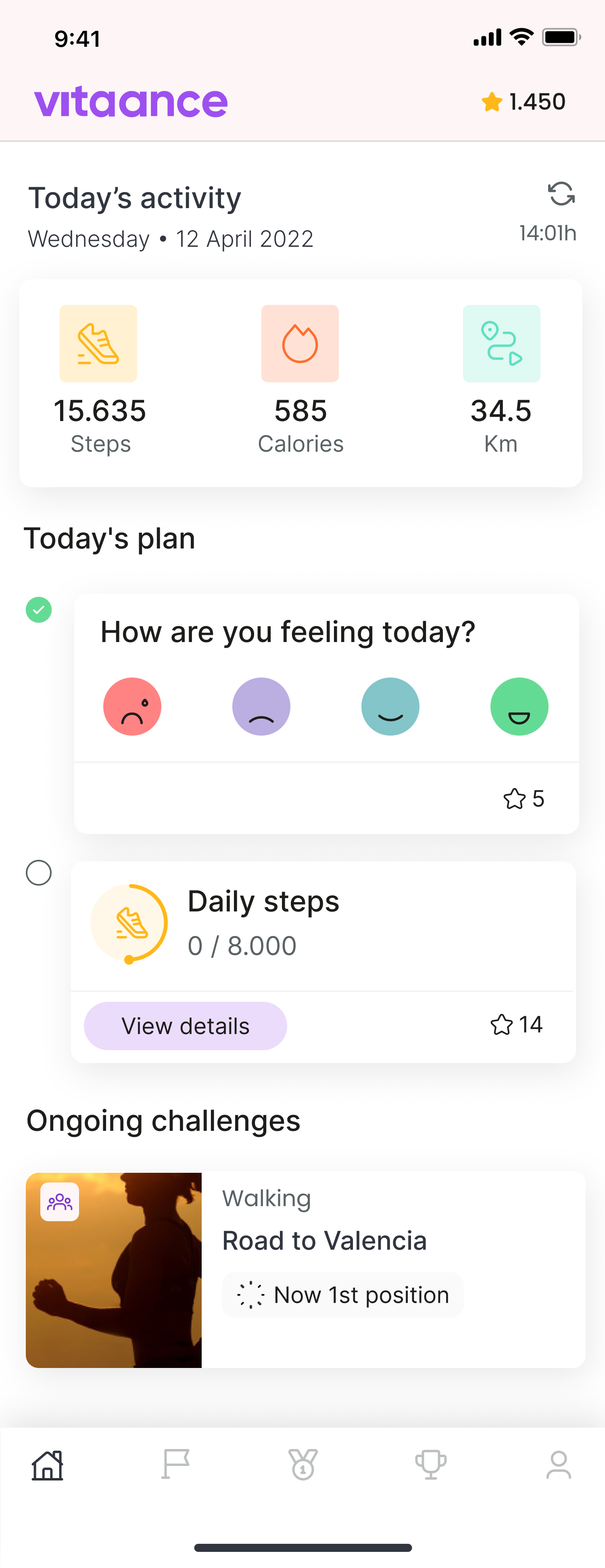



I collaborated closely with the marketing team to define a new design language: one that was playful, vibrant, and friendly, without compromising clarity or usability. This became the foundation for a new design system that gradually replaced the old UI components.




Since the design overhaul had to happen alongside active feature development, we approached it incrementally. I ensured that transitions between old and new UI were visually harmonious, so users wouldn’t experience sudden or jarring changes. Over time, I built a robust library of reusable components, consistent in shapes, spacing, and colours; This greatly improved design and development speed, which was critical in our fast-paced environment.
BRINGING THE BRAND TO LIFE WITH MASCOTS
To further enhance the emotional connection with users and express the brand’s tone in a more relatable way, we began introducing mascots. Initially created for marketing campaigns, I saw the opportunity to bring them into the product itself, adding personality and storytelling to key screens and flows.
Little by little, these mascots became part of the app experience. Whether guiding users through onboarding or describing the statues of a page, they helped humanise the interface. Users responded positively, many cited the mascots as a delightful and memorable part of the app.
For me, designing these micro-universes around the mascots was a joy. They allowed us to explain complex concepts with simplicity, add emotional warmth to the user journey, and give Vitaance a distinctive voice in a crowded market.




4 - Impact and results
Over my 2.5 years at Vitaance, I played a central role in shaping both the product and the processes behind it — from design to delivery, from internal tools to user experience. My contributions spanned strategy, execution, and hands-on problem-solving across multiple teams.
- Designed, groomed, and tested 20+ new features across the mobile app and internal tools
- Led the end-to-end design of a new admin panel, built entirely from scratch
- Maintained and prioritised the product roadmap, balancing business needs, user feedback, and tech constraints
- Continuously improved the UX of a live app, modernising legacy UI while releasing new features in parallel
CONTENT AND ENGAGEMENT
- Created and managed monthly in-app content: including challenges, quizzes, articles, and themed experiences
- Set up and coordinated event-based app notifications, aligning product touchpoints with user motivation and behavior
RESEARCH AND VALIDATION
- Conducted multiple rounds of user interviews, surveys, and client validations
- Managed questionnaire design and distribution to capture qualitative and quantitative insights
- Synthesised feedback from users, clients, and stakeholders into actionable improvements
OPERATIONS AND LOGISTICS
- Oversaw the logistics and distribution of Vitaance cards to clients
- Ensured smooth operation of the expense processing pipeline, managing reimbursement flows and balance validations
ANALYTICS AND FEEDBACK LOOPS
- Collected and analysed key product metrics to inform roadmap decisions
- Built and maintained a centralised feedback page, capturing insights from users, clients, and internal stakeholders
- Participated in client and stakeholder meetings, presenting product updates and strategic proposals
USER SUPPORT AND PROBLEM SOLVING
- Took ownership of complex user-facing issues, acting as the go-to problem solver across product, ops, and support
- Advocated for user needs internally, ensuring real problems translated into real solutions
5 - Team collaboration
As the primary product person at Vitaance, I acted as a bridge between all departments, ensuring alignment across design, engineering, operations, leadership, and commercial teams. My role required not just execution, but active facilitation and strategic coordination.
I collaborated closely with engineers throughout the entire product lifecycle.
- Before design, I initiated technical scoping sessions to understand feasibility, discuss trade-offs, and align on timelines
- During design, I presented flows and prototypes, refined them based on tech constraints, and supported implementation through detailed user stories and regular check-ins
- During development, I was the go-to person for clarifying logic, adjusting UX patterns as needed, and making quick, informed decisions
- Post-development, I personally tested features to ensure that the mechanics and UI matched both the spec and user expectations
This workflow was highly iterative and collaborative, helping us build efficiently without sacrificing user experience.
WITH LEADERSHIP
I worked directly with leadership to define priorities, align on roadmap decisions, and communicate timelines.
I regularly presented design proposals, shared user insights, and reported on the impact of shipped features to support product and business strategy.
The operations team was a key stakeholder in nearly every feature.
- I collaborated with them to understand their internal workflows
- Designed tools that would streamline expense processing, user management, and reimbursements
- Acted as their advocate during feature planning to reduce manual tasks and boost scalability
This relationship was critical to ensuring the product worked not just for users, but for the team running it.
WITH MARKETING
I partnered with marketing to ensure clear, engaging communication of product updates to users and clients.
Together, we defined the tone, visuals, and structure of in-app content, product announcements, and educational materials.
I also supported the team with designs for the website, infographics, and interactive prototypes used in campaigns.
Sales often came to me with client feedback, prospect requirements, or demo needs.
- I created custom prototypes to showcase features in a clear and compelling way
- Provided product insights and future plans to support sales conversations
- Helped refine messaging to better position our value to prospective clients
6 - Lessons and takeaways
In fast-paced environments, technical and design compromises are often necessary to meet business goals. But everything swept under the rug eventually catches up, affecting user experience, scalability, and operational efficiency. Building sustainably, even under pressure, pays off.
Users rarely read carefully, especially when solving problems. Clear communication isn’t just about clarity; it’s about strategic repetition. Reinforcing key concepts across screens, flows, and touchpoints ensures understanding across a diverse user base.
Owning up to mistakes doesn’t show weakness, it shows maturity and integrity. Transparent communication with users, clients, and stakeholders has consistently led to stronger relationships and more respect than trying to present a perfect front.
The best design decisions often come after a step back. Allowing time for incubation, walking away and returning with fresh eyes, has saved me countless iterations and avoided premature solutions. It’s a simple but powerful habit that improves both quality and speed.